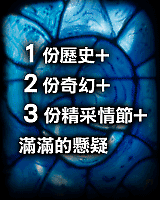Vehicle design at the Royal College of Art turns 40 next year. The postgraduate course, with a global reputation for nurturing up-and-coming car designers, boasts an alumni that reads like the who’s who of the car design world.
It includes highly influential figures like Peter Horbury who turned Volvo around, and the maverick designer of Ford of Europe, Martin Smith, as well as Jaguar design chief, Ian Callum. Other graduates include the original Audi TT designer and current head of Kia design, Peter Schreyer and Aston Martin’s design director Marek Reichman.
This year’s fourteen graduates kept the flag flying. Competing for the 2008 Pilkington Automotive Vehicle Design award, their projects ranged from a fresh take on eco-design to finding new ways of expressing personalisation. A couple of the students even challenged the status quo by designing boats for an imaginary future destroyed by global warming.
 Sergio Loureiro Da Silva wants to regenerate lost energy through movement. The Spanish designer explains: 'It’s about improving sustainability by designing every element to aspire to less energy consumption.' His Pheonix concept car aims for a similar driving sensation as riding a motorbike with a sidecar. Da Silva has also incorporated the technical elements in the design. 'The beauty of a vehicle comes from the contrast of a fluid shape with precise technical elements,' he says.
Sergio Loureiro Da Silva wants to regenerate lost energy through movement. The Spanish designer explains: 'It’s about improving sustainability by designing every element to aspire to less energy consumption.' His Pheonix concept car aims for a similar driving sensation as riding a motorbike with a sidecar. Da Silva has also incorporated the technical elements in the design. 'The beauty of a vehicle comes from the contrast of a fluid shape with precise technical elements,' he says. Best design interpretation winner Pierre Sabas has worked with a new architectural form with his Airflow concept. Both the electrically driven engine and suspension are mounted directly in the wheel allowing for a high degree of architectural freedom. The interior structure houses four individual capsules for occupants. Airflow’s exterior is made entirely of glass. 'I’ve tried to wrap it around like fabric,' says the French designer. 'It allows for a new driving sensation and it gives the occupants a new perception of the outside world.'
Best design interpretation winner Pierre Sabas has worked with a new architectural form with his Airflow concept. Both the electrically driven engine and suspension are mounted directly in the wheel allowing for a high degree of architectural freedom. The interior structure houses four individual capsules for occupants. Airflow’s exterior is made entirely of glass. 'I’ve tried to wrap it around like fabric,' says the French designer. 'It allows for a new driving sensation and it gives the occupants a new perception of the outside world.' Swedish designer Jon Radbrink’s mission is to incorporate sustainability in the overall package. 'There is no real differentiator between normal and hybrid cars,' admits the winner of best use of glass. Nuaero, therefore, uses aerodynamic principles to help reduce fuel consumption. 'I was inspired by architecture,' he notes. 'I used glass in conjunction with other materials to create a layered affect that gives the feeling of transparency for the occupants.'
Swedish designer Jon Radbrink’s mission is to incorporate sustainability in the overall package. 'There is no real differentiator between normal and hybrid cars,' admits the winner of best use of glass. Nuaero, therefore, uses aerodynamic principles to help reduce fuel consumption. 'I was inspired by architecture,' he notes. 'I used glass in conjunction with other materials to create a layered affect that gives the feeling of transparency for the occupants.'www.jonradbrink.com
 Ceri Yorath wants his driver to experience speed in an entirely new way. The three-seater Nereus fuel cell-powered vehicle is covered in transformable plates, which alter during the journey to visually reflect the driving style and the route. These experiences are then captured on a memory card for later recollection and nostalgia.
Ceri Yorath wants his driver to experience speed in an entirely new way. The three-seater Nereus fuel cell-powered vehicle is covered in transformable plates, which alter during the journey to visually reflect the driving style and the route. These experiences are then captured on a memory card for later recollection and nostalgia. 'I’m thinking about a new way of consuming cars,' confesses Italian designer Ilaria Sacco. Her concept car allows for a high degree of personalisation by encouraging the customer to mix and match objects from various brands into the car. 'Like how you would design your living room,' she says.
'I’m thinking about a new way of consuming cars,' confesses Italian designer Ilaria Sacco. Her concept car allows for a high degree of personalisation by encouraging the customer to mix and match objects from various brands into the car. 'Like how you would design your living room,' she says.www.ilariasacco.com
 Joonas Vartola’s Iomega project explores ways of incorporating a private 'relaxation capsule' in a chauffer-driven vehicle for the busy commuter. 'The structure and layout of the car supports and fosters the idea of this being a passenger car rather than the usual driver's car architecture,' says the Finish designer.
Joonas Vartola’s Iomega project explores ways of incorporating a private 'relaxation capsule' in a chauffer-driven vehicle for the busy commuter. 'The structure and layout of the car supports and fosters the idea of this being a passenger car rather than the usual driver's car architecture,' says the Finish designer.www.joonasvartola.com
 South Korean designer Jung Hoon Rhee is concerned that our health is being compromised by the rigid seating position in cars. His Noah concept incorporates 'wave seats', which duplicate the lightness of being immersed in water. He says: 'They can cope with various body sizes from infants to obese people providing equal comfort everywhere.'
South Korean designer Jung Hoon Rhee is concerned that our health is being compromised by the rigid seating position in cars. His Noah concept incorporates 'wave seats', which duplicate the lightness of being immersed in water. He says: 'They can cope with various body sizes from infants to obese people providing equal comfort everywhere.' Spanish designer Arturo Peralta Nogueras’s vehicle bonds with its driver as a rider does with his or her horse. Fuelled by algae, the exterior of the futuristic car is made of a solid hologram technology and the interior evolves and adapts to its environment, passengers and scenarios.
Spanish designer Arturo Peralta Nogueras’s vehicle bonds with its driver as a rider does with his or her horse. Fuelled by algae, the exterior of the futuristic car is made of a solid hologram technology and the interior evolves and adapts to its environment, passengers and scenarios. Raquel Aparicio Lopez’s Soft Vehicle concept is a delicately executed foam car, sporting a sensual slit across the profile for entry, and a zip in the rear for the boot. The Spanish designer believes that if we are able to control movement and avoid accidents then cars don’t need to be made of hard materials. In this case satellites from above and sensors on the road direct this driverless vehicle. 'I would like to extrapolate rubber, textile and other soft materials into vehicle design,' she says.
Raquel Aparicio Lopez’s Soft Vehicle concept is a delicately executed foam car, sporting a sensual slit across the profile for entry, and a zip in the rear for the boot. The Spanish designer believes that if we are able to control movement and avoid accidents then cars don’t need to be made of hard materials. In this case satellites from above and sensors on the road direct this driverless vehicle. 'I would like to extrapolate rubber, textile and other soft materials into vehicle design,' she says. To Paul Howse luxury is enhanced through the object’s life experience much like a historic car. 'The idea is to create a local quality, something that is completely unique to you,' he says. The handcrafted bronze used on the glasshouse gradually changes over time to give the car history. www.howsedesign.com
To Paul Howse luxury is enhanced through the object’s life experience much like a historic car. 'The idea is to create a local quality, something that is completely unique to you,' he says. The handcrafted bronze used on the glasshouse gradually changes over time to give the car history. www.howsedesign.com Reginald Hingston also designed a boat, albeit a more socially conscious one, that utilises local engineering, materials and craftsmanship to develop a transport solution to link 13 West African coastal cities.
Reginald Hingston also designed a boat, albeit a more socially conscious one, that utilises local engineering, materials and craftsmanship to develop a transport solution to link 13 West African coastal cities. Korean Yunwoo Jeong has designed a car that is a commuter for day, SUV for weekends.
Korean Yunwoo Jeong has designed a car that is a commuter for day, SUV for weekends.News source:http://www.wallpaper.com/cars/rca-vehicle-design-2008/2486









0 意見:
張貼留言